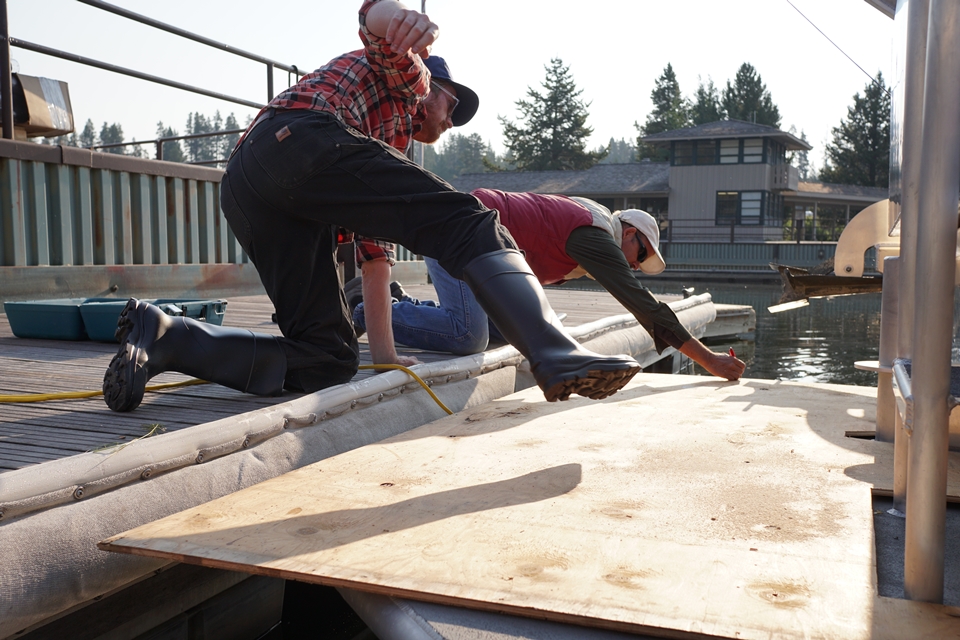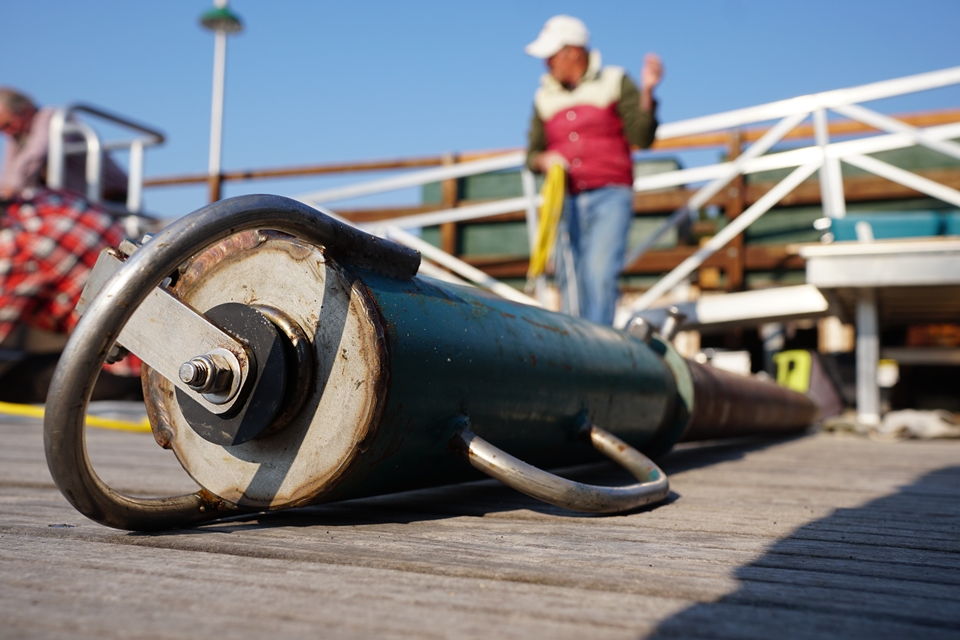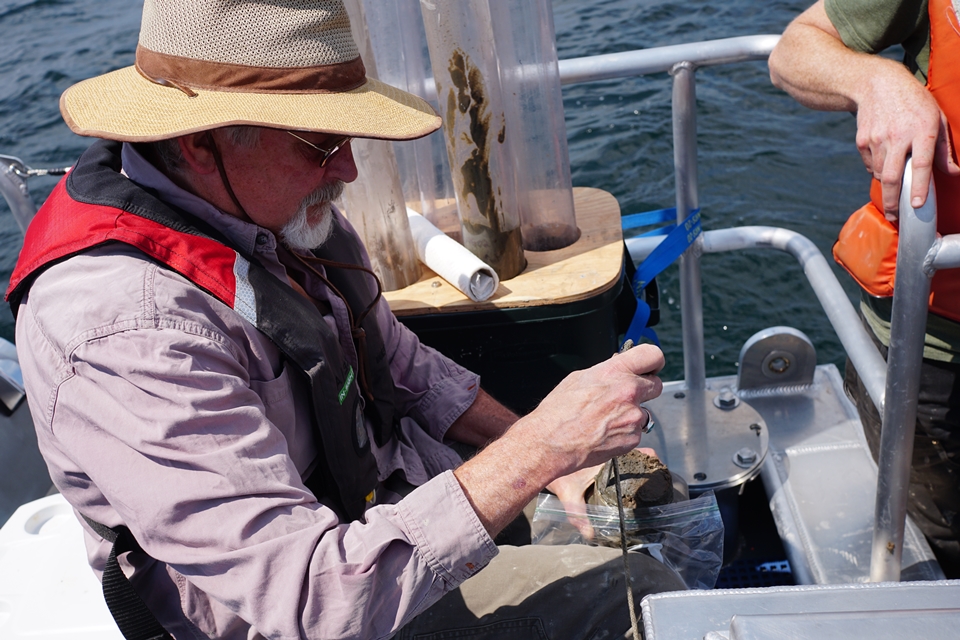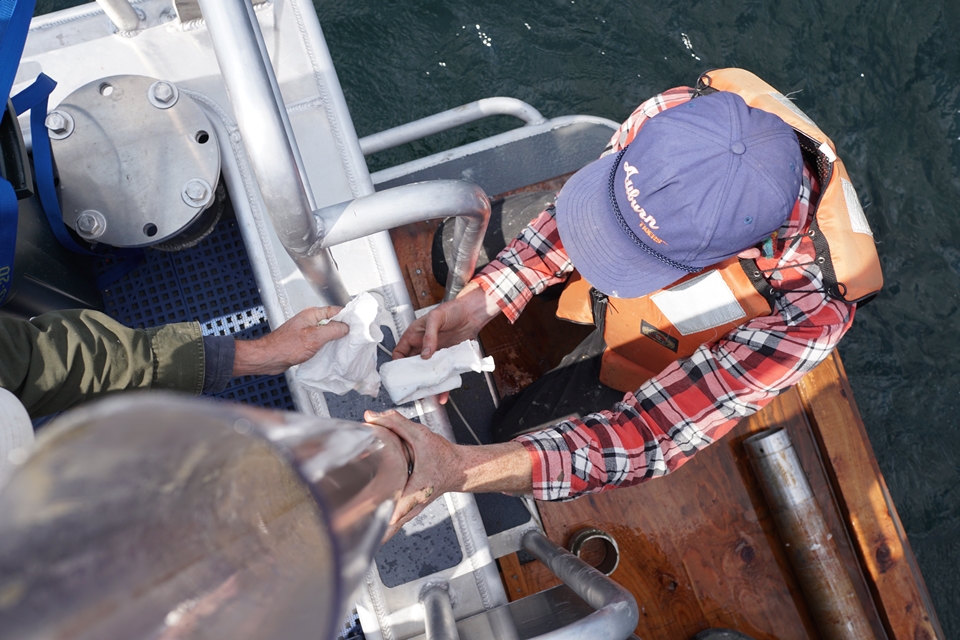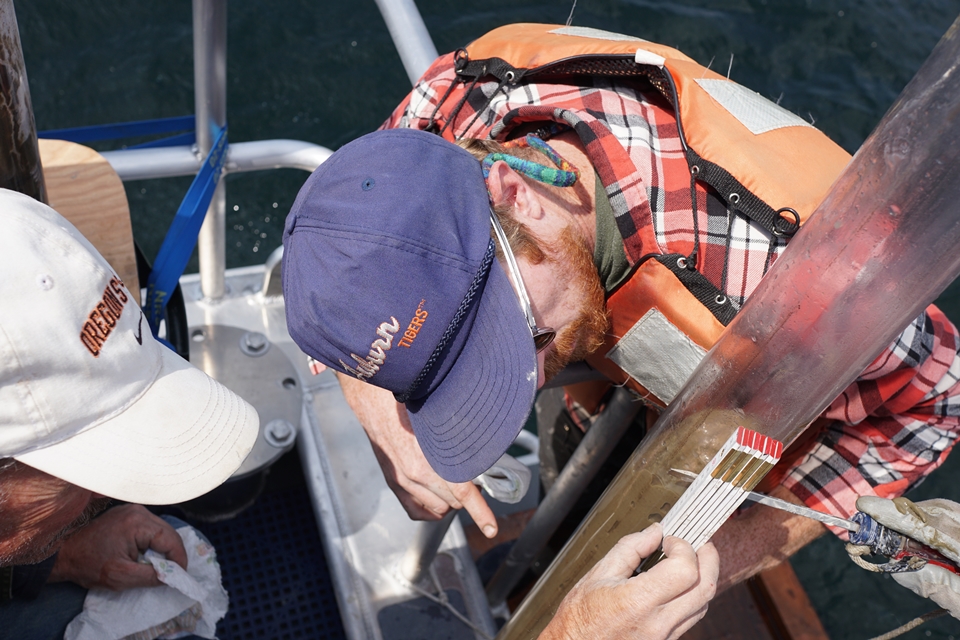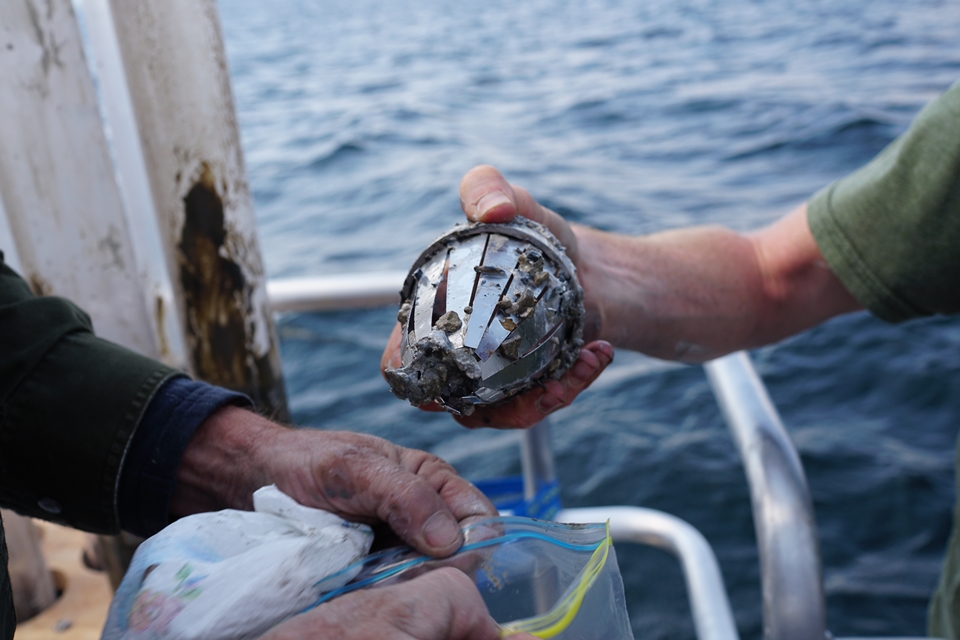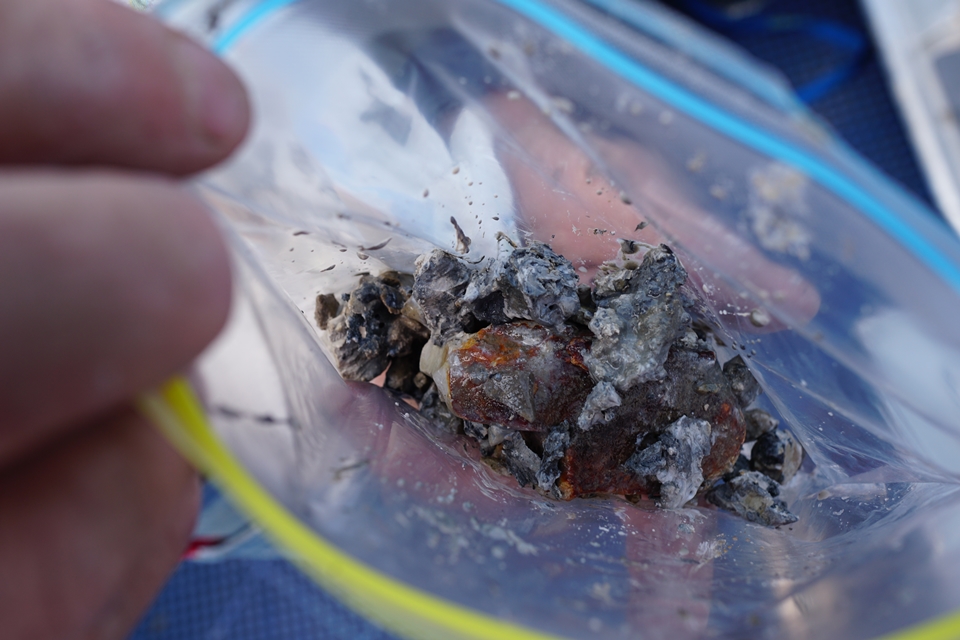Today, Luke McKay, Bill Inskeep, and Pat Shanks collected gravity cores in and around the focus site northeast of Stevenson Island. Gravity coring is a method that extracts a cylindrical mass of sediment up to two meters (6.5 feet) long by dropping a hollow, 100+ pound tube into the sediment from 5-10 meters (16-33 feet) off the lake floor. The downward momentum of the tube drives it into the sediment, filling the inner chamber with material that can be later used for experiments.
Before collecting any samples, the team first built a wooden covering to protect the back of the boat from the heavy coring equipment. Once the covering was installed, it was time to push off and head to the study site. The depths in this area range from 80 – 120 meters (262-394 feet), depending on what part of the venting field you are in. When we arrived at the first site we lowered the rig to 5 meters (16 feet) above the lake floor, let it free fall into the sediment, and raised it to the surface. The whole process took about 20 minutes. Everyone on the boat was hopeful as the inner tubing was removed from the gravity core to reveal that the first core had brought up … NOTHING.
Another two attempts were made, altering the height from which the rig was dropped and even trying to slowly lower it into the sediment, which all came up empty. Luke, Bill, and Pat concluded that the sediments in the location were too hard to properly core. After much deliberation, it was decided that we would move on to the next site. Once there we lowered the rig and dropped it at the new location, the coring attempt was a success! We recovered a core measuring about 40 centimeters (16 inches). While the learning curve was steep for the day, the team recovered five cores, providing valuable data about the biology and chemistry of the venting field.
Story and photos by Louis Garcia, Louisiana State University. Work was completed under an authorized Yellowstone Research Permit.
